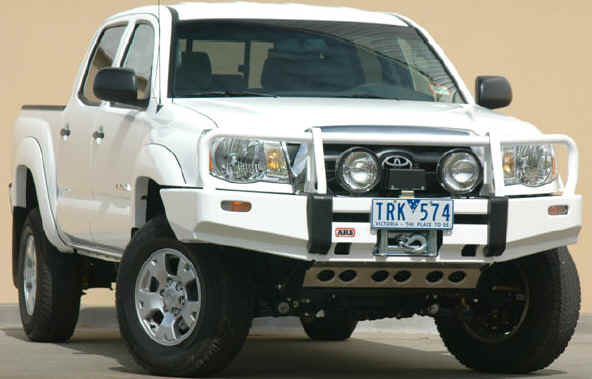devinsixtyseven
Explorer
How far down did you set the internal dividing piston? I have a plan, just want to verify with what others have done.
-Sean
-Sean
kcowyo said:BT is in Moab for Cruise Moab, pimping this ride from ARB. Lucky dog..... :jumping:


kcowyo said:BT is in Moab for Cruise Moab, pimping this ride from ARB. Lucky dog..... :jumping:
devinsixtyseven said:Thanks for the responses guys...
I sorted it out that evening after SOAZ's reply. There's an easier way. The dividing piston needs only to not get smacked by the shaft, and needs enough room to travel so that the required shaft compression volume isn't greater than the available volume after oil is added. By using the shaft as the measuring instrument you get to avoid the calculations and you know it'll be in the right location.
Depress the Schraeder valve so the dividing piston is free to move. Put the rod guide and end cap all the way at the end of the shaft--ie full compression--then put the shaft in the dry shock body, so you're pressing the dividing piston down with the shaft.
Press it all the way until the rod guide is level with the end of the shock body, then give it about 1/4" additional depth. Release the Schraeder valve, withdraw the shaft, fill halfway with oil, insert fully compressed shaft almost all the way, fill the rest of the way with oil, insert the shaft the rest of the way. If you did it correct, the dividing piston is now 1/4" away from the end of the shaft at full compression, leaving plenty of room for nitrogen and adequate oil volume.
-Sean
devinsixtyseven said:Thanks for the responses guys...
I sorted it out that evening after SOAZ's reply. There's an easier way. The dividing piston needs only to not get smacked by the shaft, and needs enough room to travel so that the required shaft compression volume isn't greater than the available volume after oil is added. By using the shaft as the measuring instrument you get to avoid the calculations and you know it'll be in the right location.
Depress the Schraeder valve so the dividing piston is free to move. Put the rod guide and end cap all the way at the end of the shaft--ie full compression--then put the shaft in the dry shock body, so you're pressing the dividing piston down with the shaft.
Press it all the way until the rod guide is level with the end of the shock body, then give it about 1/4" additional depth. Release the Schraeder valve, withdraw the shaft, fill halfway with oil, insert fully compressed shaft almost all the way, fill the rest of the way with oil, insert the shaft the rest of the way. If you did it correct, the dividing piston is now 1/4" away from the end of the shaft at full compression, leaving plenty of room for nitrogen and adequate oil volume.
-Sean
Didn't bother...I know it'll workBajaTaco said:That makes sense. So did you happen to measure the distance from the piston to the rim of the can, just to see if it was the same, or close to the dimension provided by SAW?
devinsixtyseven said:Didn't bother...I know it'll work. SAW didn't provide me a dimension...
